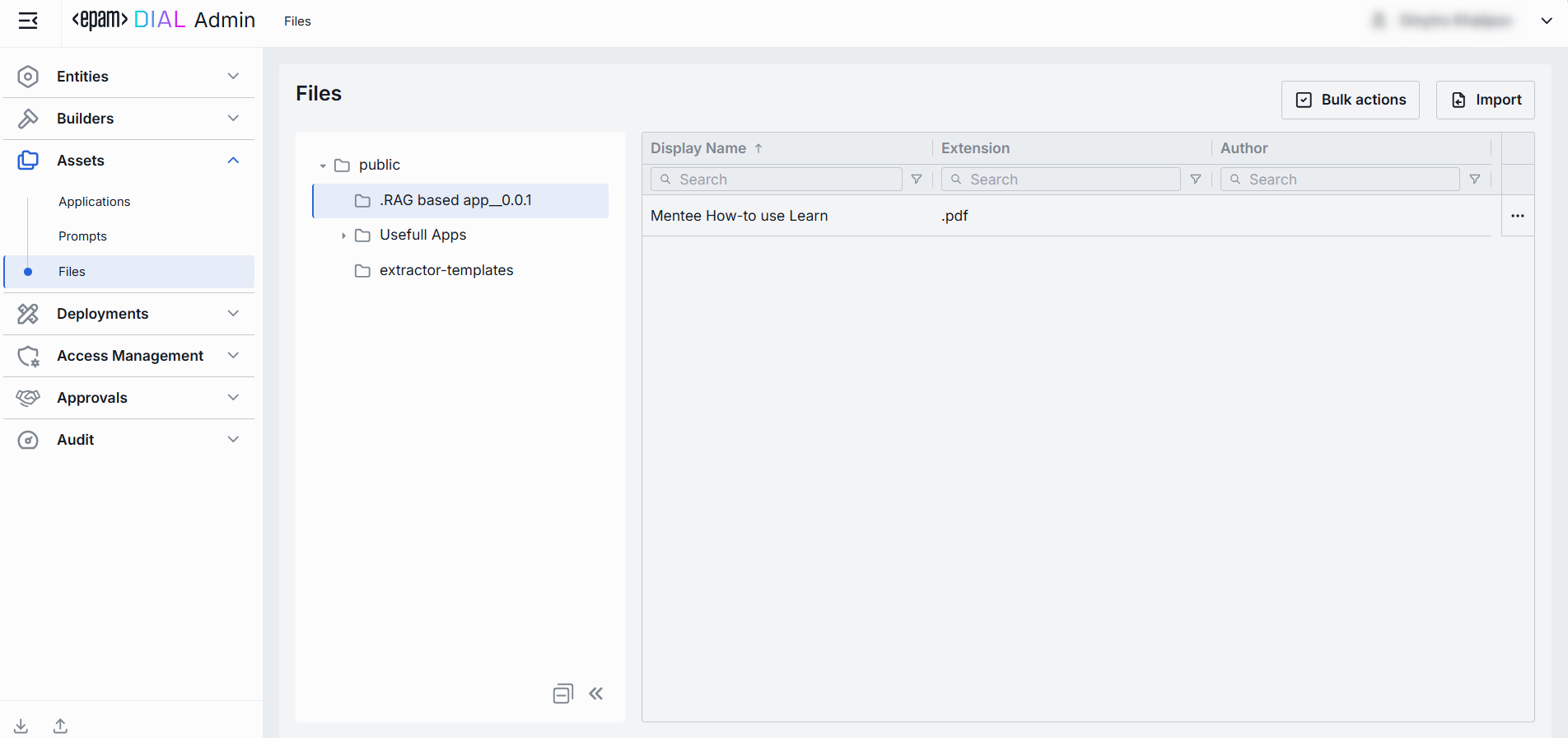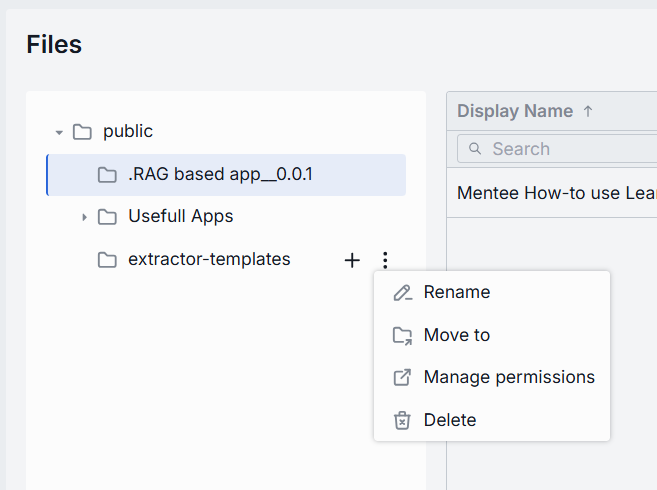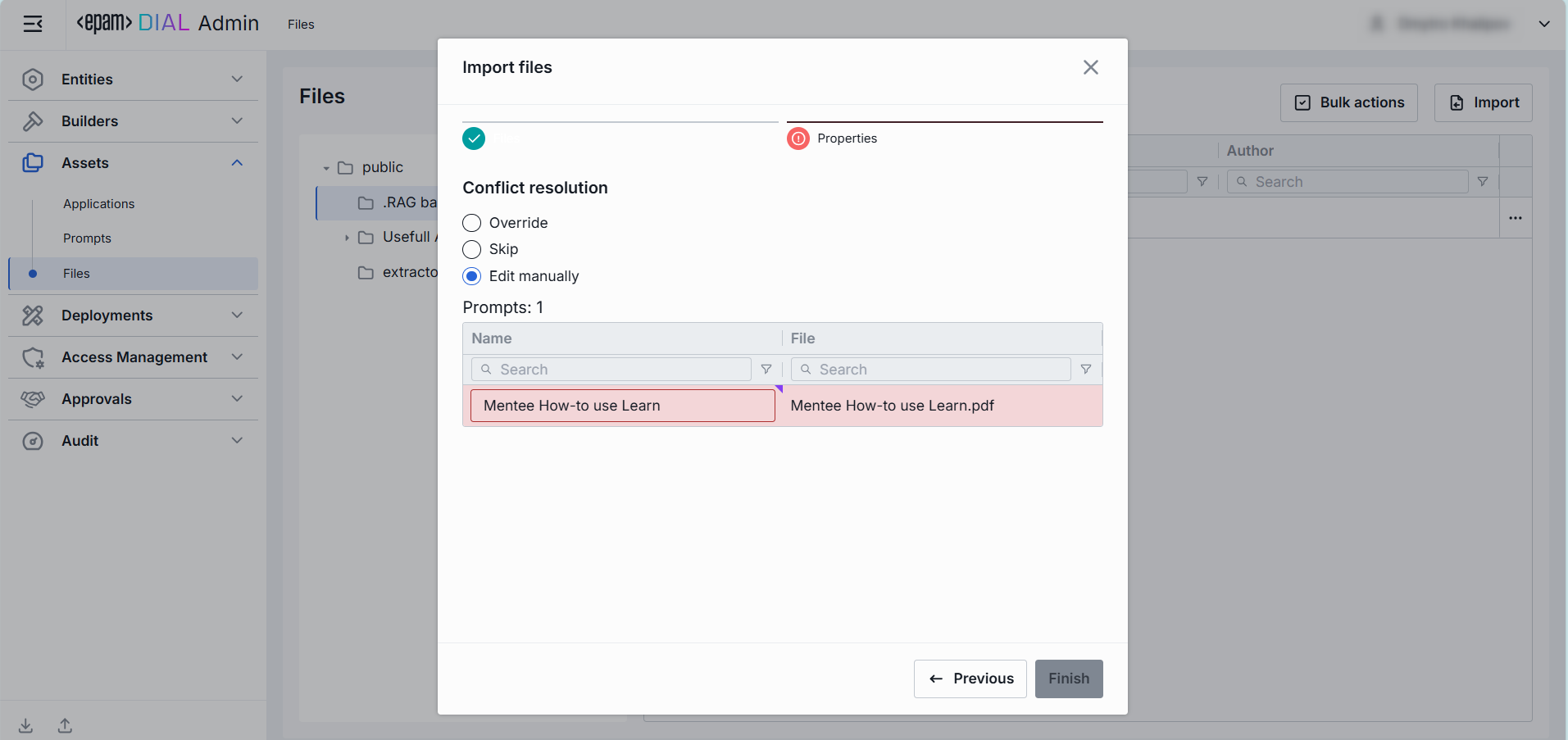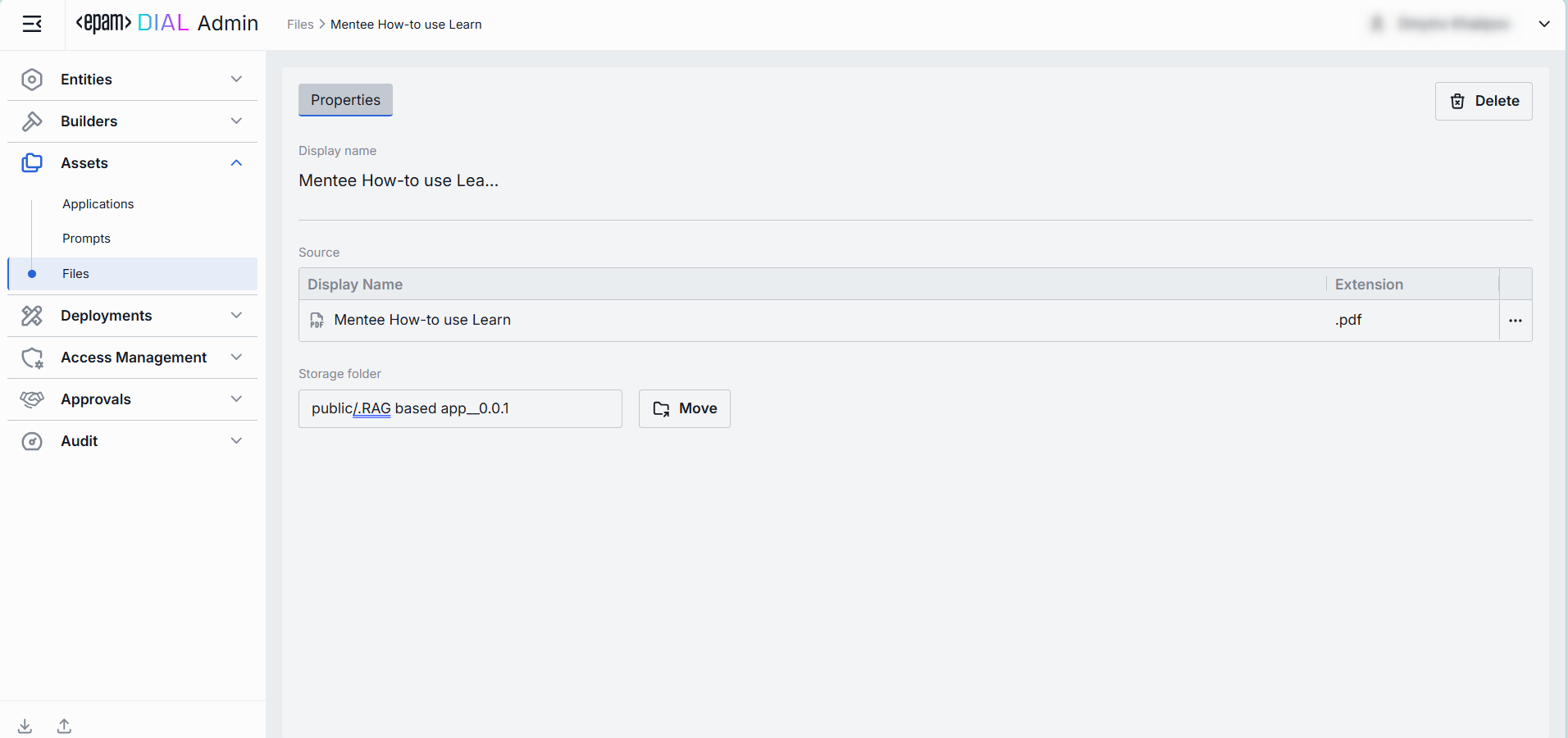Files
About Files
Files in DIAL are arbitrary binary or text assets (JSON, CSV, PDF, images, etc.) your models and applications can reference at runtime.
Files Main Screen
In Files, you can manage all files in the Public folder.
Refer to Access Control to lean more about Private and Public logical spaces for objects storage in DIAL.

Folders Structure
Objects in the Public space are arranged hierarchically, similar to a file system. In this part of the screen, you can see the hierarchical structure of folders in the Public space.
| Element | Description |
|---|---|
| Root folder | A root folder. Contains the sub-folders and files. It is visible to all users. |
| Sub-folders | Files can be placed in a specific sub-folder for logical organization purposes. |
| + (Create) | Hover over any folder to display this action. Allows creating new child or sibling folder and import the files into it. Same flow as Import, but also requires to provide a folder name. |
| Actions | Hover over any folder to view a context menu icon with actions you can perform in relation to the selected folder. - Rename: Use to rename the selected folder. - Move to: Use to select a target location in the hierarchy to move the selected folder. - Manage permissions: Redirects to Folder Storage to manage access to the folder. - Delete: Use to delete the folder with files inside it. |

Files Grid
Click any folder in the hierarchy to display files stored in it.
| Column | Definition |
|---|---|
| Display Name | A technical key for the file (e.g. exclusion-words). |
| Extension | The extension of the file. |
| Author | The username or system ID associated with the user who created or last updated this file. |
| Actions | Actions you can perform on the selected file: - Open in new tab: Opens a new tab with file's properties. - Move to another folder: Use to select the target folder in the hierarchy to move the file. - Delete: Use to delete the file. |
Export
Use Bulk Actions in the toolbar to export files. This is helpful for backup, sharing, or migrating supporting assets alongside your DIAL configuration.

To export files:
- Click Bulk Actions.
- Select files by checking the boxes in each row.
- Click Export to download a ZIP archive with files.
Import
Use Import in the toolbar to upload external files into DIAL’s assets storage. This is useful for adding reference documents, data or other supporting assets.

To import files:
-
Click Import in the toolbar to launch the import modal.
-
Select the type of files you want to import. Drag & drop files or an archive into the drop zone, or click Browse to open your local file browser.
- Archive (single ZIP file). Only 1 archive file can be imported at a time.
- Separate Files (up to 30 individual files). Each file must be ≤ 512 MB.
-
Once files appear in the list, click Next to proceed.
-
Resolve any conflicts by choosing a strategy for handling files with the same name and path:
- Override: Replace existing files with the new ones.
- Skip: Do not import conflicting files and keep existing files unchanged.
- Edit manually: Rename incoming files one by one to avoid conflicts. Each conflicting file is flagged with red color and becomes editable - update its Name to avoid conflicts.
-
Once all conflicts are resolved, click Finish to complete the import.

Configuration
Click any file to open the configuration screen.
Properties
In the Properties tab, you can view and manage the selected file, including moving it across folders.

| Field | Definition & Use Case |
|---|---|
| Display Name | The filename including extension (e.g. request.json, lookup.csv). Display-only but with a copy-to-clipboard button for easy reference. |
| Source/Display Name | The name of the file without the extension (e.g. request). |
| Source/Extension | The file type (e.g. .json, .csv, .pdf). |
| Source/Actions | Click the context menu icon to open additional actions: - Preview: Click to preview a file. - Download: Click to download a file. |
| Storage Folder | The path to the file's location in the hierarchy of folders. Use for moving files between folders. |
Delete
Click Delete in the toolbar on the Properties screen to permanently remove the selected file from your workspace. Any models or applications that reference it will break until you reattach a valid file.
You can also delete a file using the Delete option in the file context menu or by deleting the related folder.